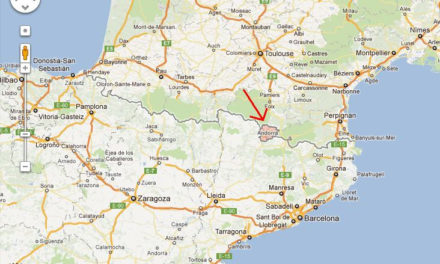Banning the sale of sugar-sweetened beverages at UCSF resulted in belt-tightening by employees —literally. Such a ban was implemented from July 2015 to October 2016. A study in JAMA Internal Medicine October 28 analyzed the impact of the ban on 214 members of the workforce who regularly consumed sugar-sweetened drinks. Participants cut their average consumption almost in half —from about 35 ounces/day to 18/day. Mean waist circumference went down by 2.1 centimeters.
Senior author Laura Schmidt, a professor at the medical school, made some interesting comments to science writer Anahad O’Connor, who has been covering the sugar-consumption story for the New York Times:
“She pointed out that it costs the University of California healthcare plan more than $5,000 per year to cover someone with pre-diabetes compared with someone without it.
“Dr. Schmidt said that the policy was also an easy switch for UCSF’s beverage suppliers. Instead of stocking campus stores and cafeterias with Sprite and Coca-Cola, they filled them with mostly bottled water and low- or no-calorie beverages instead. ‘UCSF still has a contract with Coca-Cola and they still show up at the medical center in their big red truck, except now they unload Dasani water instead of Coke,” she added.
In my lifetime capitalism has made a commodity out of drinking water —a basic necessity of life, the provision of which by government was a basic part of the social contract, we assumed back in the day. Parks, playgrounds, schools, museums —all had functioning fountains, as did office buildings and other private-sector venues such as movie theaters. Many are now dysfunctional or have been removed. People are supposed to buy their drinks. The corporate state reduces citizens to consumers.
During my 13-year stint at UCSF there was a water cooler down the hall that was supplied by a truck driver employed by Alhambra, not the city and county of San Francisco. A four-gallon bottle was placed upside down on top of a dispenser with a spigot from which you filled a small paper cup. Gravity and a valve controlled the flow. The driver would come once a week with full bottles and to take away the empties. At one point c. 1990 Alhambra changed from a round four-gallon glass bottle to a squared-off five-gallon plastic bottle —harder work for the drivers that was not accompanied by a raise.
I once asked our delivery person the source of our bottled water, hoping to hear Mt. Shasta or some such pristine rural setting. He said Alhambra had a bottling plant near the airport and the bottles were filled with water from the tap. Which would have been okay if it was pure Hetch-Hetchy, but San Francisco had started adding chloramine to the water, which made it unfit for birds to drink (according to the knowledgable missus, who was raising Gouldian Finches). I hoped Act-Up would act up about chloramine in the water, but my suggestion went unheeded.
Now UCSF’s Dr. Schmidt is pleased that people are drinking Dasani water instead of Coca-Cola. But to 20th Century Fred, they —we— are paying $1.50 for something that should be free, and tossing another plastic bottle into the ocean.
Bonus track: The Tawdry Office Affair





